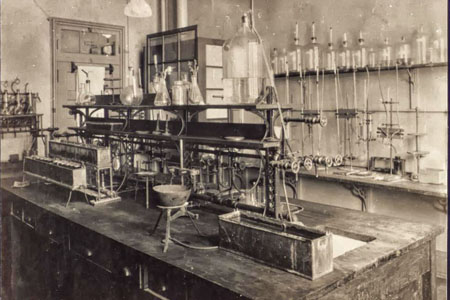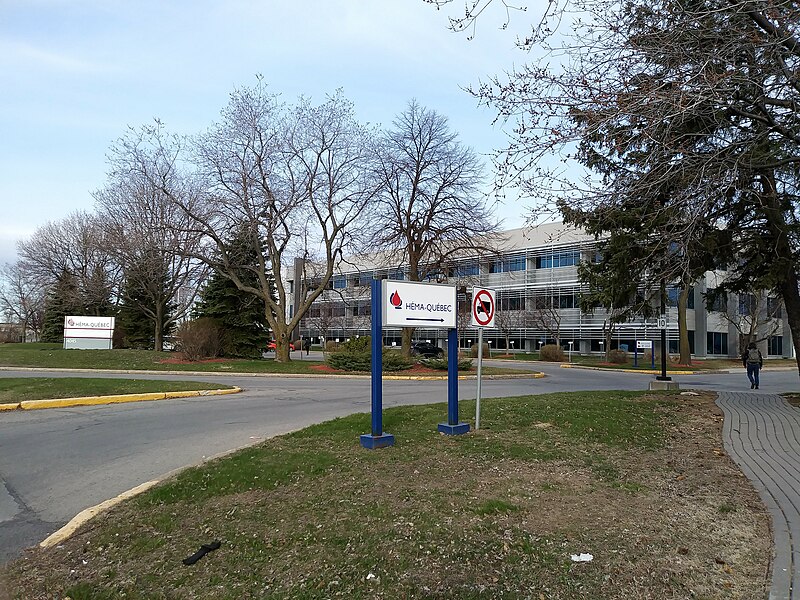The Commission of Inquiry on the Blood System in Canada, also known as the Krever Inquiry, was a public investigation of the Canadian blood system, which had been contaminated with the human immunodeficiency virus (HIV) and hepatitis C virus during the 1980s. (See also Aids.) In 1993, a public inquiry into the Canadian blood system was established and Justice Horace Krever was named commissioner. The infection of thousands of Canadians with (HIV) and hepatitis C is Canada's worst- ever preventable public health disaster. It has also become one of its most prolonged legal sagas, featuring a high-profile public inquiry, almost $10 billion in legal claims and a criminal investigation.
Roots of the Krever Inquiry
At least 2,000 recipients of blood and blood products contracted HIV between 1980 and 1985. (See also Aids.) Another 30,000 transfusion recipients were infected with hepatitis C, a potentially debilitating liver disease between 1980 and 1990. About 8,000 of those who received contaminated blood products are expected to die as a result.
While the story of tainted blood is complex, the root of the scandal lies in a handful of decisions and non-decisions by the administrators and regulators of Canada's blood system. They include the following:
- The failure to screen blood from high-risk donors for fear of blood shortages;
- The importation of plasma collected in high-risk areas, such as U.S. prisons and San Francisco at the height of the AIDS epidemic;
- Delays in purchasing safer, heat-treated blood products for hemophiliacs prompted by a desire to use up inventory of contaminated products;
- Delays in implementation of testing for the AIDS virus due to spending restrictions;
- A failed attempt by the provinces to build a network of blood manufacturing plants that cost taxpayers $700 million, and which was the main reason high-risk plasma had to be imported from the US;
- The refusal to use a test that would have identified almost 90 per cent of hepatitis C cases, again in an attempt to save money;
- Once the extent of the infection of the tragedy became known, a failure to track down those who had received tainted blood so they could receive treatment and avoid passing on the viruses to others;
- The destruction of key documents of the Canadian Blood Committee, which had a hand in most of the above decisions;
- A pact by the provincial health ministers to deny compensation to infected claimants;
- The refusal of the Canadian Red Cross Society and provincial and federal ministers to apologize for their failings;
- Attempts to derail the public inquiry and prevent any findings of wrongdoing against those implicated in the tragedy.
Public Trust
One of the principal casualties of the tainted blood affair has been the public trust. Giving blood, which has its roots in the wartime effort, had achieved an almost mythical status in Canada. At the time, more than 300,000 Canadians a year gave blood, but as details of the scandal became public, donations dropped markedly.
The Canadian Red Cross Society, which bore the brunt of bad publicity though only a portion of the blame, was stripped of the blood program it had operated for half a century.
The Canadian Blood Commission, later renamed the Canadian Blood Agency, was also disbanded. It was replaced by Canadian Blood Services, an independent agency operating at arm's length from government. Quebec also created its own agency, Héma-Québec. The fallout from the scandal also led to the restructuring of the Bureau of Biologics, the division of Health Canada responsible for monitoring blood safety.
Krever Inquiry
The Commission of Inquiry on the Blood System in Canada (known as the Krever Inquiry) was commissioned by the federal government in October 1993. Headed by Justice Horace Krever, the Commission spent four years investigating the tainted blood tragedy, issuing its final report on 21 November 1997. It fought a number of pitched legal battles with government, principally over its right to name publicly those who had failed in their duties. In the process, it redefined the role of public inquiries and created a factual framework to be used by criminal investigators.
While cathartic, the hearings did not quell the anger of victims; rather, it redoubled it. That is because the commission's principal recommendation, that all victims of tainted blood, past, present and future, receive no-fault compensation, was rejected by governments.
The federal government first provided $120,000 in "humanitarian assistance" to victims of tainted blood in 1989 in exchange for a promise that they would not sue. In 1993, the provinces extended the compensation plan, offering $30,000 a year to all those who had contracted HIV from blood.
Those who contracted hepatitis C fought a very public battle for equal treatment, but governments have opted to try and settle their lawsuits out-of-court. As of 2006, $1.023 billion has been offered only to those infected prior to 1 January 1986 and after 1 July 1990, a period in which the government admits liability for its failure to institute available tests for hepatitis C.
After five years, police laid 32 criminal charges against senior scientists at Health Canada, the Canadian Red Cross Society and Armour Pharmaceutical Co., but victims of tainted blood said the charges only scratched the surface, and they renewed calls for a more in-depth investigation of the political motives underlying the most controversial decisions.
In 2005, the Canadian Red Cross pleaded guilty to distributing blood contaminated with HIV and hepatitis C. The organization was fined $5,000. The Canadian Red Cross also issued a formal apology and agreed to give $1.5 million to the University of Ottawa. This money will be used towards a scholarship for affected family members and for a research endowment fund.

 Share on Facebook
Share on Facebook Share on X
Share on X Share by Email
Share by Email Share on Google Classroom
Share on Google Classroom









